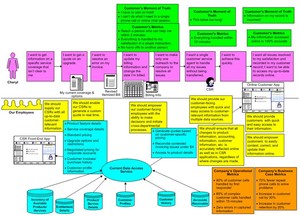“We’re finding it challenging to adapt to our customers’ behaviors. They tweet, they chat, they text; they don’t want to go online and log a case,” one customer support exec recently complained. “Our best customers are first-time parents,” said a product marketing exec. “They used to be in their twenties; now they tend to be in their late thirties. They’re much more demanding.” “A much larger percentage of our end-users are Chinese,” a high tech exec explained. “They’re younger and less experienced than our traditional users, and we need systems and software that don’t require deep domain experience.”
Whatever business you’re in; your customers are changing. They’re getting younger or older. Their expectations and experience levels are different than those of the customers you had five years ago. That means that the customer experience you designed (or inherited) five years ago is probably clunky and inappropriate. The end-to-end customer experience you should be delivering today (and next year) may be vastly different than the one you have. That’s the bad news.
Here’s the good news…

- Tune the experience for each of your key customer segments, based on their different contexts (what we call Customer Scenarios).
- Understand the “jobs” your customers have to do (their outcomes) and help them accomplish those outcomes as quickly as possible, with no hassle, and much delight. Streamline CX across functional silos, product lines, and geographies. Customer experience has no boundaries.
- Provide all the customers’ information to them proactively and make it actionable from anywhere at any time. Ensure that your staff members see the same information your customers see.
- Measure customers’ success in achieving their outcomes and monitor how close you come to meeting customers’ success metrics for their moments of truth during each customer journey.
- Don’t design straight through end-to-end processes; break customer-impacting activities into bite size chunks that can be handled in any order. Embrace variability, and assume that exceptions are the norm.
- Merge your UX (User Experience) product design teams with the CX (Customer Experience) teams who are designing the end-to-end customer journeys for your brands.
- Measure your results in terms of customer momentum, customer loyalty, and customer profitability.
If you want to dig deeper, here are a few of our classic customer experience design primers:



